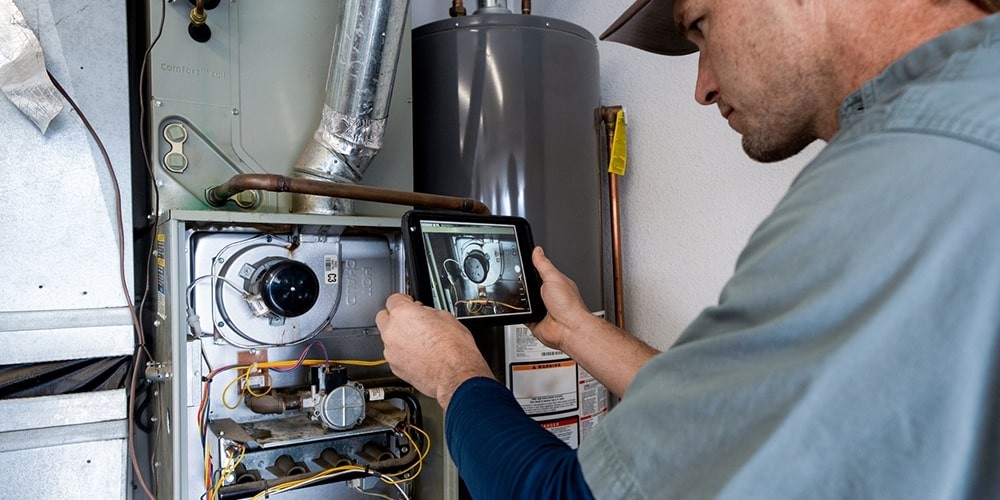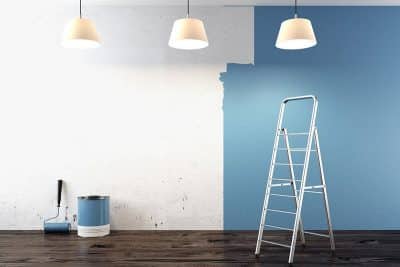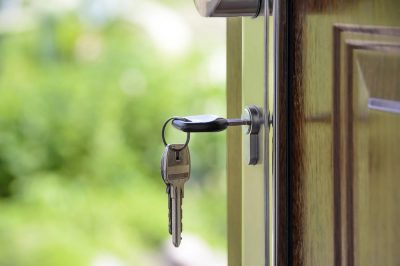
It can be challenging to determine whether to replace your furnace entirely or repair it when it begins to malfunction. The age of the unit, the cost of repairs, energy efficiency, and safety concerns are some of the variables that influence the decision. An old or inefficient furnace may end up costing more in the long run, even though a quick fix might keep it operating for a few more years. Homeowners can make an informed choice by being aware of common furnace issues and troubleshooting techniques.
This article examines the main elements that can help you decide if replacing or repairing your furnace is the better course of action for your house.
Common Furnace Issues: Repair or Replace?
Determining the problem at hand is crucial before choosing between repair and replacement. Typical furnace issues include the following:
Your furnace may completely stop working due to a blown motor. For older units, replacing the motor is often more practical because it can be costly, even though a repair might be possible.
A broken thermostat can cause uneven heating, but this issue is typically resolvable with a straightforward repair or recalibration.
Uneven heating in the home may result from ductwork problems or an inefficient furnace. If your system is outdated, replacement might be the more economical option.
Clogged or dirty filters can reduce airflow and place unnecessary strain on the furnace. Regular maintenance usually resolves this issue.
A cracked heat exchanger is a serious concern as it can lead to carbon monoxide leaks. In this case, replacement is the safest option.
Short cycling—when the furnace frequently turns on and off—may be caused by a faulty thermostat, restricted airflow, or an oversized unit. Depending on the root cause, either repair or replacement might be required.
Troubleshooting techniques such as replacing filters, checking thermostats, and inspecting vents can often resolve minor issues. However, persistent or severe problems may indicate that it’s time for a new unit.
When to Repair Your Furnace
Your Furnace Is Under Ten Years Old
A properly maintained furnace typically lasts between 15 and 30 years. If your unit is less than ten years old, repair is often the most economical solution. Issues like a malfunctioning thermostat, minor motor problems, or clogged filters can usually be addressed without replacing the entire system.
Repairs Cost Less Than 30% of Replacements
“If the cost of fixing your furnace is less than 30% of the price of installing a new system, it is generally advised to do so,” explains Gennadi Kaganovich, CEO at SmileHVAC. For example, if repairs cost $500 and a new unit costs $5,500, repairing makes more sense—unless frequent costly fixes start to add up, in which case replacement may be wiser.
Your Energy Costs Are Consistent
If your furnace is still operating efficiently and your energy bills haven’t increased significantly, a repair may be the best option. Routine maintenance—like duct cleaning or part replacement—can help restore minor dips in performance.
You Plan to Move Soon
If you’re planning to sell your home in the near future, repairing the existing unit may be more cost-effective than installing a new furnace, especially if it won’t drastically increase the property’s resale value. Ensuring the current unit functions reliably may be all that’s needed.
When to Replace Your Furnace
Your Furnace Is Older Than Fifteen Years
Older furnaces are more prone to breakdowns and typically less energy-efficient. If your unit is over 15 years old, replacing it with a modern, high-efficiency system equipped with smart technology could significantly reduce energy usage and heating costs.
Regular Repairs Are Required
If you find yourself calling an HVAC technician multiple times a year, it may be more practical to replace the unit. Constant repairs are not only costly but also inconvenient, especially during colder months. A new furnace offers greater reliability and peace of mind.
Your Energy Costs Have Increased Significantly
A sudden rise in heating bills may signal that your furnace is working harder than it should. Over time, older systems lose efficiency, which increases energy consumption. Switching to a high-efficiency model can improve performance while lowering monthly expenses.
Your Furnace Produces Carbon Monoxide
A damaged heat exchanger can release dangerous carbon monoxide gas. Symptoms of exposure include headaches, dizziness, and nausea. If your carbon monoxide detector alerts you, evacuate immediately and contact emergency services. In such cases, replacing the furnace is the only safe option.
Problems with Comfort and Unequal Heating
Persistent cold spots in your home, despite repairs, may mean your furnace is too old, too small, or has failing components. A modern, properly sized furnace can improve both comfort and efficiency. Because selecting a new furnace can be complex, it’s always wise to consult with a qualified HVAC professional.
Final Thoughts
Safety should always be the top priority for homeowners. If there’s any risk of carbon monoxide leaks or other hazards, replacing the furnace is the only responsible choice. By consulting an HVAC expert, you can assess your system’s condition and determine the most effective and economical path forward.
By carefully evaluating your furnace’s performance and repair history, you can make a well-informed decision—one that ensures comfort, efficiency, and safety for years to come.








